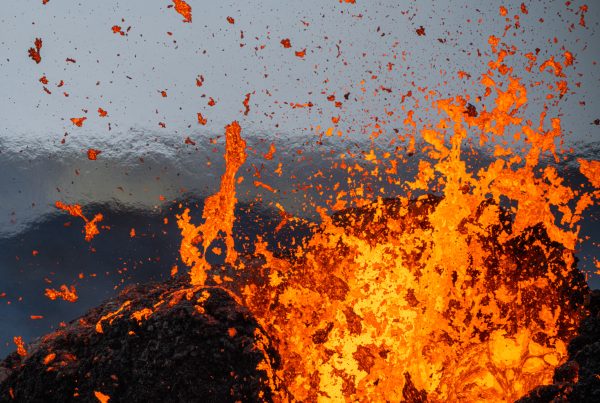One Month Since the Start of the March Eruption
As we observe the one-month milestone of the eruption at the Sundhnúksgígar series, the LAVA Centre continues to follow closely and implement an educational perspective on these natural events. Notably, the land at Svartsengi has experienced significant elevation, indicating a robust magma flow beneath the surface.
The eruption that began on the evening of March 16 is now the second-longest eruption on the Reykjanes Peninsula since 2021. Only the first eruption in Fagradalsfjall, which started in March 2021 and lasted about six months, was longer. Initially, the eruption featured several craters, but now only one remains active. A recent post on the Icelandic Meteorological Office website states that no conclusions can be drawn about the continuation of seismic activity based on the duration of this eruption. There are no indications that the magma flow from the depths, which has driven the recent sequence of events, is decreasing.

As April began, The MET Office observed a notable increase in the rate of land uplift. At present, an equal amount of magma is both erupting to the surface and accumulating in the magma chamber beneath Svartsengi. This dual activity is leading to a rise in pressure within the magma chamber. Photo: Icelandic Met Office
Twice the size of Central Park
The Natural Science Institute of Iceland and the National Land Survey of Iceland conducted an aerial survey over the eruption site on 15 April. The measurements indicate that the lava field covered an area of 6.15 square kilometres (2.37 square miles) with a volume of approximately 33.2 million cubic meters ( 1.172 billion cubic feet) as of that day. This is approximately equivalent to twice the size of Central Park in New York City. The average lava flow from the crater between April 8th and 15th was estimated at 3.2 cubic meters per second, showing a slight decrease from the 3.6 cubic meters per second recorded from April 3rd to 8th.

Flow map of the current lava field. Photo: Icelandic Met Office.
This natural occurrence offers a unique opportunity for visitors and researchers to understand the profound geological processes at play.
At the LAVA Centre, we emphasise the importance of real-time monitoring and closely following expert analysis to ensure accurate communication.
Join us to explore more about how Iceland’s volcanic landscape shapes our understanding of these forces. At LAVA, safety and education go hand in hand. We ensure that our visitors not only learn about volcanic activity but also understand the measures taken to safeguard our community against potential hazards.
Iceland is still a very safe destination and the eruption area is within an isolated area and has no impact on flights or other destinations in Iceland.
For further details on the current volcanic activities and safety measures, please refer to the latest updates from the Icelandic Meteorological Office or Visit Iceland.



